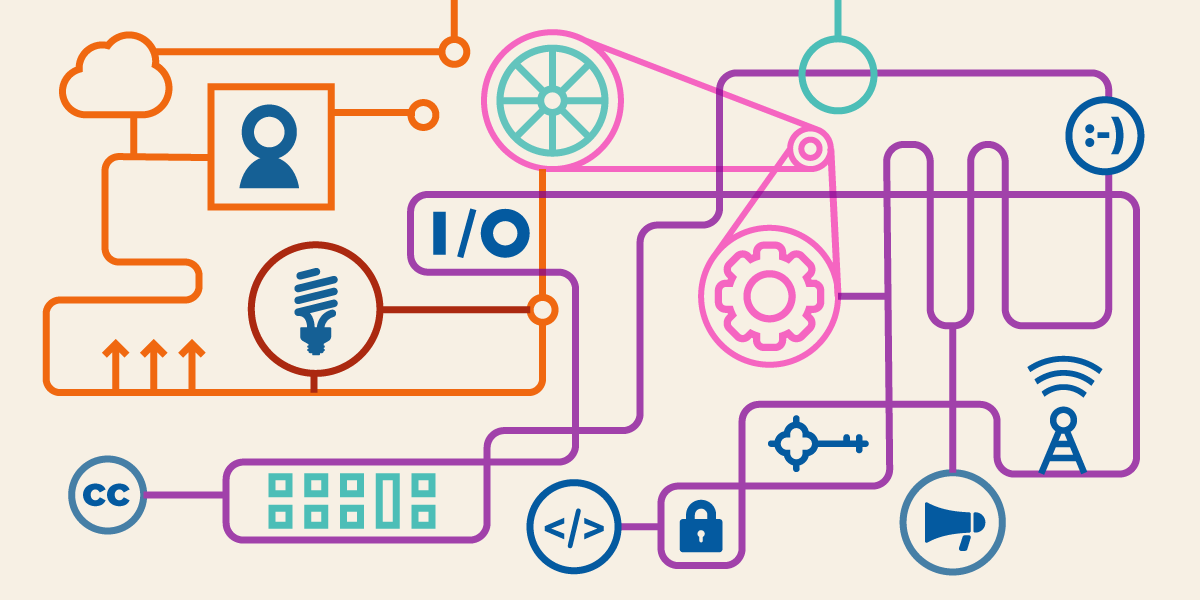In 2002, Lexmark was one of the leading printer companies in the world. A division of IBM—the original tech giant—Lexmark was also a pioneer in the now-familiar practice of locking customers in to expensive "consumables," like the carbon powder that laser-printers fuse to paper to produce printouts.
Lexmark gave its customers the choice of paying extra for their cartridges (by buying refillable cartridges at a $50 premium), or paying extra for their toner (saving $50 on a cartridge whose "lock-out" chip prevented refilling, so that they would have to buy a whole cartridge when the non-refillable one ran dry). Customers, however, had a counteroffer for Lexmark: they wanted to save $50 on a "non-refillable" cartridge and then go ahead and refill it. After all, carbon is relatively abundant throughout the universe, and more locally, Earth has more carbon that it knows what to do with.
Various competitors of Lexmark stepped up to help its customers with their counteroffer. One such company was Static Control Components, which reverse-engineered Lexmark's lock-out chip and found that its 55-byte program performed a relatively straightforward function that would be easy to duplicate: when a cartridge was newly filled, this chip signaled to the printer that the cartridge had available toner. Once the cartridge ran out, the chip would tell the printer that it had an empty cartridge. Refilling the cartridge did no good because the chip would still tell the printer that there was no toner available.
After Static Control performed this bit of reverse engineering, it was able to manufacture its own chips, which it sold to remanufacturers, who would pour in fresh carbon, swap out the chip, and sell the cartridges. Lexmark had a strong objection to this. But like every business, Lexmark’s products should be subject to market pressures, including the possibility that customers will make uses (and re-uses) of your product that aren’t exactly what the manufacturer intended. Lexmark was in a position to create its own refilling business to compete with Static Control, of course. But it didn’t want to. Instead, it wanted to trap purchasers into the lucrative two-tier market it had dreamed up.
Under a reasonable open market, that would have been the end of it: Lexmark would have either sucked it up and taken the losses at the margins from Static Control, or it would have gone into the refilling business and tried to outcompete them. But in 2002, Lexmark thought it had a third option: to have the pathway that Static Control took to create aftermarket competition declared illegal.
In 1998, President Bill Clinton signed the Digital Millennium Copyright Act (DMCA) into law. The DMCA was a comprehensive set of copyright changes occasioned by the advent of commercial Internet services. While the DMCA's significance has only grown over time, one part, Section 1201, has become central to the story of competition, information security, and self-determination in digital technology, reaching far beyond the traditional copyright industries. And this overflow really begins with the dispute between Lexmark and Static Control.
DMCA 1201—the "anti-circumvention" rule—imposes a blanket ban on disabling or bypassing "access controls" for copyrighted works. In plain language, that means that you can't override a manufacturer's software locks on copyrighted works. Notably, DMCA 1201 does not limit itself to banning circumvention where copyright infringement takes place: if you remove or bypass a copyright lock to do something that is perfectly legal, like fair use or reverse engineering, you're still in violation of DMCA 1201. What's more, providing people with a tool to bypass a DMCA 1201 lock can sometimes be a criminal violation, a felony punishable by a five-year prison sentence and a $500,000 fine (for a first offense!).
Originally, DMCA 1201 was used by companies that made products like DVD players and game consoles. For example, DVD players rely on "region coding" to stop people from buying DVDs in one country and watching them in another country. This isn't a copyright violation (buying a licensed DVD and then watching it in your home is definitely not a copyright violation!), but it is a violation of the movie studios' business models, which maximize profits by controlling when movies are released in different "territories." Because bringing a DVD from one territory to another and watching it require that you somehow disable your DVD player's software lock, the movie studios have been able to create a new kind of violation: Felony Contempt of Business Model.
So long as DMCA 1201 was only applied to a few niche devices like DVD and game players used to control access and copying of commercial entertainment products, it was at least contained. Lexmark, however, was determined to expand DMCA 1201 and avail itself of the right to sue competitors for contempt of its own business models. Lexmark's lawsuit against Static Control made an unprecedented argument: that bypassing its lock-out chips was a violation of DMCA 1201.
At first, it's hard to understand how this could work. The lock-out chips on a toner cartridge control access to fine carbon powders -- not copyrighted works. How could a law that banned breaking copyright locks cover bypassing locks on carbon?
Lexmark had an answer: the copyrighted work in its toner cartridge was the 55-byte program in the lock-out chip, which also functioned as a password that enabled printing. Software is copyrightable, and so the copyrighted work that the lock was protecting was... part of the lock itself.
Happily, the court didn't buy it. While the judges in the Court of Appeals for the Sixth Circuit acknowledged that software could be copyrighted, they found that a software program doesn’t trigger DMCA 1201 restrictions when it’s used as a password.
Time went by, and Lexmark fared just fine. Today, Lexmark is part of a conglomerate of companies that also includes Static Control, putting them both on the same side.
The underlying story of Static Control was once routine: once a company like Lexmark attained dominance, it would attract competitors who would find ways to erode that dominance by providing its customers with superior products at lower prices. The new entrants would rely on adversarial interoperability as their chief competitive weapon: that's when a company makes a new product that works with another company's existing products, against the established company's wishes.
Unfortunately, Lexmark (now combined with Static Control) didn’t give up after the court refused to allow it to use section 1201 to block competition. It shifted its focus to patent law and tried to fight off new competitors with that intellectual property claim, rather than by making better products at better prices. It’s such efforts that led EFF to launch its patent-busting project, to help clear a path for competition in digital tools that benefit users.
Today, Lexmark's legacy isn't an object lesson in the ways that adversarial interoperability can fuel competition, lowering prices and improving products. Rather, it's an early example of a ruthless campaign to dominate markets and see off competitors by invoking Felony Contempt of Business Model and various intellectual property regimes.
As the years have gone by, DMCA 1201 has only become more of a threat, despite the good legal precedent in Lexmark. That's because other federal appeals courts have rejected the Lexmark precedent, holding that DMCA 1201 liability can attach no matter why the downstream user bypassed an access control, unless one of the narrow, temporary exemptions apply.
The first printer ink wars were fought with superior products, but today's printer ink wars are being fought with dirty tricks and legal threats.
More than 15 years ago, the case Lexmark showed us that forcing companies to compete on price and quality created a vibrant market where no one could dominate forever. Today, that promise has not been kept. Between patents, unfair terms of service and copyright overreach, the dominant players no longer need fear upstart competitors wielding adversarial interoperability: instead, using one of these underlying legal theories, the incumbents can simply bring (or threaten) suit for Felony Contempt of Business Model and sue or scare off nascent competitors before they can even get started.
Is it any wonder that investors now call any business dominated by a Big Tech giant the kill zone, rather than seeing it as an opportunity to seize a market from a bloated tyrant? It started with printers, but it definitely hasn’t ended there.














